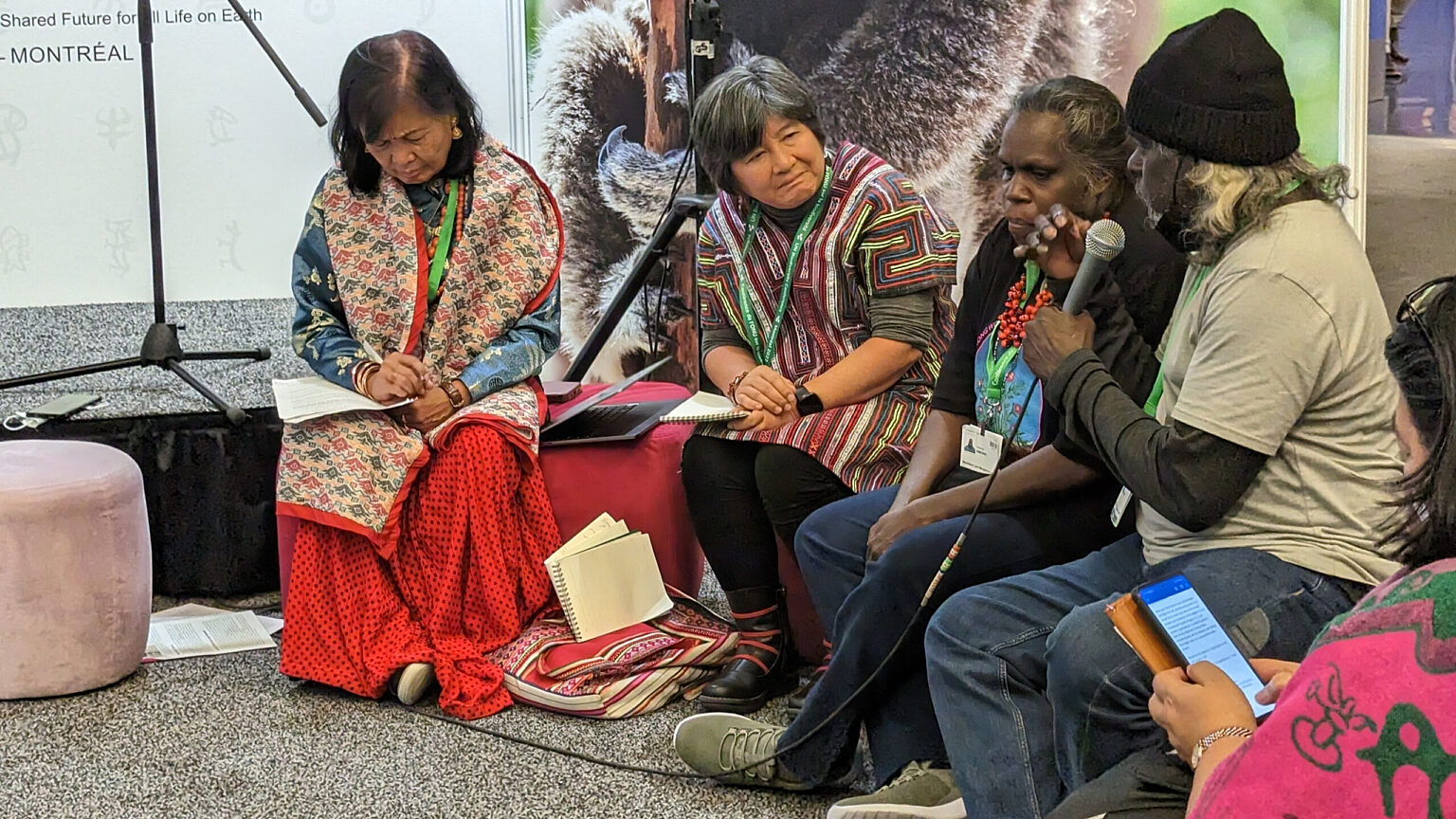Wayfinders Circle Wayfinders' Self-governance Systems are Key to Protecting the World’s Biodiversity by 2030
Indigenous traditional knowledge and care for land make indispensable contributions to the Global Biodiversity Framework.
Indigenous Peoples care for their territories through their own systems of self-governance, based on ancestral knowledge and cultural practices, acting as guardians of much of the world’s biodiversity.
The important role and contributions of Indigenous Peoples as custodians of biodiversity and partners in its conservation, restoration, and sustainable use have been acknowledged by the Kunming-Montreal Global Biodiversity Framework (GBF), agreed upon during the 15th Conference of Parties to the UN Convention on Biological Diversity in December 2022 in Montreal. Any conservation efforts in areas destinated to biodiversity protection, the text says, must recognize and respect “the rights of indigenous peoples and local communities, including over their traditional territories.”
The members of the Wayfinders Circle serve as a strong example of how traditional practices upheld in territories that Indigenous Peoples have cared for over millennia effectively protect and conserve biodiversity.
In 2009, the Nawarddeken Peoples established the Warddeken Indigenous Protected Area within Arnhem Land, a vast Indigenous territory in northern Australia and home to Indigenous cultures dating back over 65,000 years.
The Nawarddeken monitor and protect the rich biodiversity in the area, an official part of Australia’s protected area system, where numerous threatened species have coexisted with Indigenous Peoples since time immemorial.
Owners of 36 different clan groups manage 1,394,951 hectares of territory, incorporating traditional fire management to mitigate the largest and hottest fires that destroy lands.
The protection of land through Indigenous-controlled protected areas is a central part of the Warddeken governance system. It has allowed for the preservation of their culture, governed by long-standing ceremonial laws and customs. Warddeken Indigenous youth participate in its land management efforts and organizes regular expeditions to connect with sacred sites.
Fighting for recognition in the Amazon
The territory of the Wampis Nation is located in the Amazon headwaters and lies within one of the world’s most biodiverse regions. It spans the Santiago and Morona rivers, includes the Kampankis mountain range that divides the two rivers and is populated by swamps, lakes, waterfalls, and caves.
The Autonomous Territorial Government of the Wampis Nation was collectively built by the local community to defend against pressures from extractive industries. Its governance is based on a Statute that includes environmental management with regulations for land use and planning as well as setting aside sacred sites and other areas for conservation. The Wampis monitor their territory, including by employing Indigenous guards as a strategy of defense.
Despite the lack of recognition of their territories by the national government, the Wampis Nation exercise control of 1,327,760 hectares of Amazon rainforest.
“Our hope, or the hope of the Wampis government, is that its system of socio-territorial governance is recognized by the Peruvian state. To be recognized by the international community. To be recognized, and have their voices heard, around the world. Because the development of Indigenous People is the best way to build the Amazon, the world, the planetary system so that the planet continues to live”, said Nayap Santiago as he attended the 15th Conference of Parties to the UN Convention on Biological Diversity in 2022.
GBF: Strengthening Indigenous Guardianship
The Global Biodiversity Framework (GBF) has enshrined the territories and rights of Indigenous Peoples and local communities as the 196 signatory countries agreed to ensure and enable that by 2030 at least 30% of terrestrial and inland water, as well as coastal and marine areas, will be effectively conserved and managed through protected areas.
This agreement establishes that Indigenous land guardianship and ancestral relationships with nature must be respected as governments designate protected areas for biodiversity conservation. The text provides a strong basis for countries to work hand in hand with Indigenous Peoples to address the biodiversity crisis and could be an important step in correcting the negative legacy of protected areas on their communities.
“There needs to be recognition that, for Indigenous Peoples who have great respect for the territory, their presence doesn’t destroy – it enhances an area and therefore the rights of Indigenous Peoples should be respected in the process of doing conservation”, said Jennifer Tauli Corpuz (Kankana-ey Igorot), Managing Director of Policy at Nia Tero.
During the negotiations leading up to the adoption of the GBF, Indigenous Peoples and local communities have pushed for robust language that recognizes and safeguards their lands and rights in all targets. As a result, the GBF has acknowledged that biodiversity conservation must take place through “ecologically representative, well-connected and equitably governed systems of protected areas and other effective area-based conservation measures, recognizing indigenous and traditional territories”.
These conservation efforts must also respect Indigenous rights and knowledge, including traditional knowledge related to biodiversity, innovations, worldviews, values, and practices of Indigenous Peoples and local communities.
The framework also recognizes that Indigenous Peoples are entitled to full and effective participation in decision-making in accordance with the United Nations Declaration on the Rights of Indigenous Peoples.
According to Corpuz, “The work of advancing the rights of Indigenous Peoples and local communities in the GBF will support and enable Indigenous Peoples and local communities to continue and strengthen their resistance to activities that destroy or degrade the areas, lands, territories, and resources that they care for, nurture, and love.”
